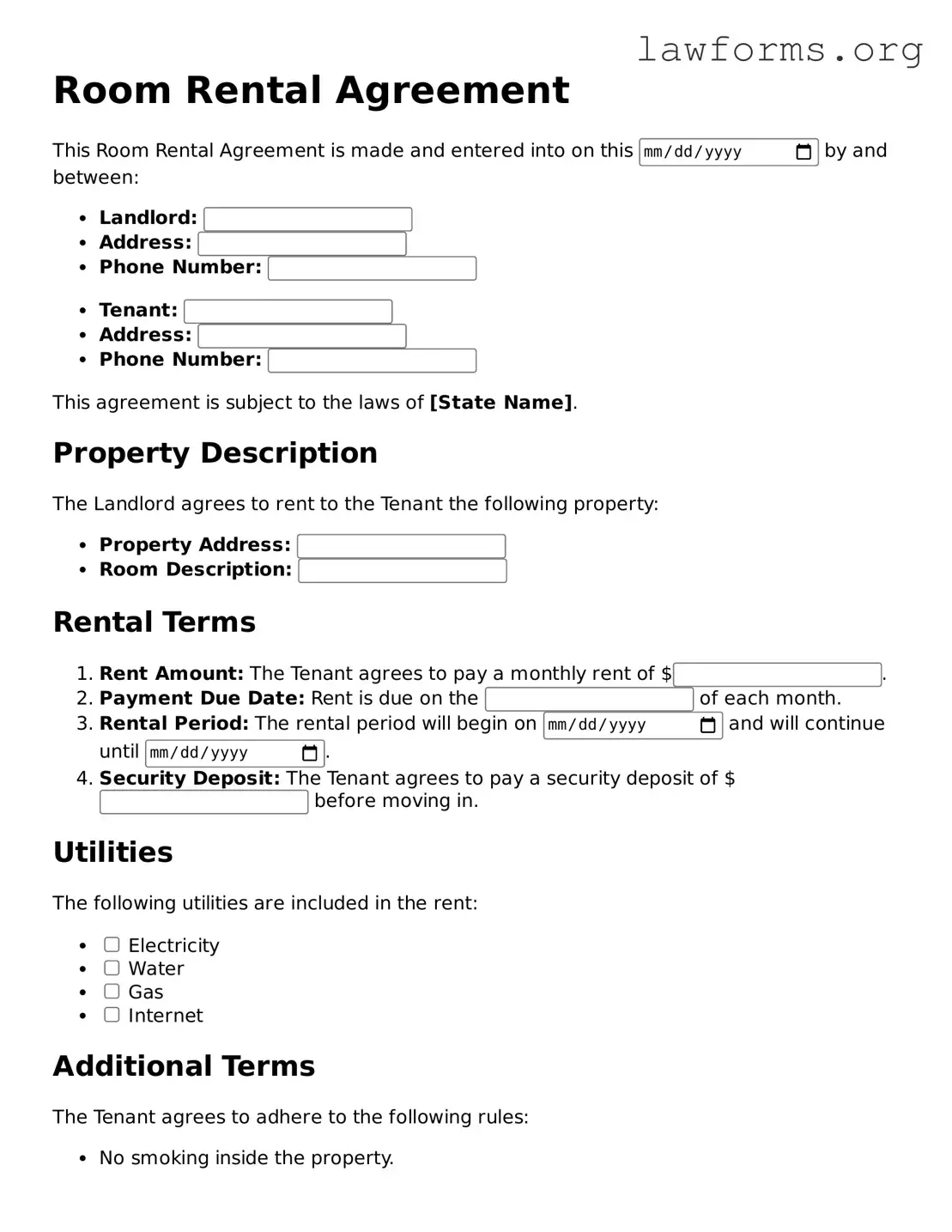Valid Room Rental Agreement Form
A Room Rental Agreement is a legal document that outlines the terms and conditions between a landlord and a tenant for renting a room in a property. This agreement protects the rights of both parties and ensures clear communication regarding rent, duration, and responsibilities. To get started, fill out the form by clicking the button below.
Customize Document Online
